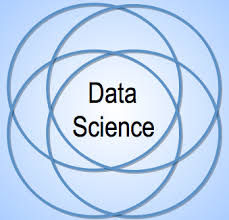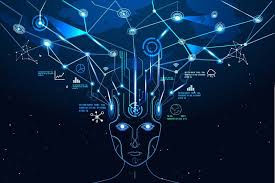The post 2 Immersive Topics: Data Science and Artificial Intelligence appeared first on Magnimind Academy.
]]>Before delving deeper, let’s have a quick look at the fundamental concepts of data science and artificial intelligence.
1- What is data science?

With the emergence of big data coupled with fast computing power, many decision-makers of businesses are trying to identify different ways to attain their business goals. These days, whenever they want to launch something new, they’re looking to data science professionals in order to get demand, market, target demographic, among others. You can think of data science as an umbrella term for all methods and techniques that professionals use to analyze huge amounts of data in order to derive insights from them. It’s the general practice of utilizing scientific tools and techniques to draw insights from or find patterns in data. Almost everything is covered by this field – from preparing raw data for analyzing to presenting insights gained from analytics.
2- What is artificial intelligence?

Artificial intelligence or AI is a broad term. At its core, it attempts to make machines think like human beings. Any algorithm, code or technique that enables computers to develop, demonstrate, and mimic human cognitive behaviors or abilities falls under the category of artificial intelligence. An artificial intelligence-powered system can be as complex as driverless cars or as simple as software which plays chess. Within artificial intelligence, there is machine learning which is considered the most exciting part of the field today and for reasons. With the help of machine learning, artificial intelligence has made a significant number of breakthroughs which once seemed nearly impossible. It’s the key reason that computers can steer a car or spot one of your friend’s face in a photo.
3- Data science and artificial intelligence – How they are different
![]()
Here are some of the major differences between data science and artificial intelligence. It’s important to understand that both of these are extremely popular choices in the tech landscape and the differences mentioned below are completely based on their operational nature.
- Data science is all about capturing, analyzing, and deriving insights of massive amounts of data whereas artificial intelligence involves providing the machines with data in order to train them.
- Data science involves identifying patterns in data whereas artificial intelligence involves observing intelligence in data.
- In the graphic aspect, data science involves representation in different graphical formats whereas in artificial intelligence, algorithm network nodes are used in the representation.
4- The relation between data science and artificial intelligence

Data science is an interdisciplinary domain which requires concepts and skills used in disciplines like statistics, visualization, machine learning etc. Data science is a general term for methods and process which analyze and manipulate data. It empowers artificial intelligence to identify appropriate information and meaning massive volumes of data with higher efficiency and speed. As for the term data science and artificial intelligence, it’s quite easy to become confused. Unfortunately, both of these terms get discussed frequently and casually by some people more interested in hype instead of solving problems, making the scenario even more confusing.
If you want to step into any of these fields, here is the think you need to keep in mind – forget the term artificial intelligence for the time being because machine learning is the biggest and most practical application for this field today. So, machine learning is the technology businesses expect candidates to understand. You can consider data science as the way you wish to implement that machine learning. It’s the real-world application of artificial intelligence with the objective of developing products/services for people.
One may argue that data science professionals were working long before the appearance of artificial intelligence as a functional option and there’re applications that don’t exclusively benefit from contemporary artificial intelligence. In the context of data science, the problem with the conventional approach is that there are massive amounts of data to be analyzed and a limited number of data science professionals to do it. Non-intelligent methods are very time- and talent-intensive. They can take a huge to come up with results when answers are really time-sensitive. As a matter of fact, artificial intelligence does need data science professionals to set up and monitor, but real-time analytics can be powered by its algorithms. And this shortens the gap between the time data is produced and the time it’s interpreted into valuable insights.
If you want to learn about an example that uses both data science and artificial intelligence, you can think of IBM Watson. It’s an AI technology which helps physicians identify key information in the medical records of a patient quickly to offer relevant evidence, as well as, explore treatment options. It takes in the medical records of a patient first and then comes up with personalized and evident-based recommendations fueled by information from a collection of 15+ pages of texts, 200 textbooks, and 300+ journals that provide the doctors with instant access to a huge amount of information personalized to the treatment plan of the patient.
5- What should you do to become a successful professional?
![]()
If you consider any subset of artificial intelligence – from basic machine learning to deep learning, you can see that all these recent advancements have created a huge need for talent, creating a substantial demand and supply gap of data science professionals. Even if you consider data scientists, who belong to the highly trained segment of the data science field, most likely it’s the youngest of generations who have actually been trained in the advanced artificial intelligence approaches, narrowing the present pool of talent even further.
As the artificial intelligence is steadily becoming transformational across different end-markets – from consumer platforms to enterprise, from robotics to cybersecurity, and more – the demand for data science professionals is growing at an extremely fast pace. The role of data science professionals in the context of artificial intelligence now assumes a new level of importance.
These days, data science professionals are automating different types of lower level tasks and handling more complex and higher level tasks. In that process, they’re both automating tasks done manually be developers or users previously and enabling them to create or use increasingly powerful products.
In the short-term, artificial intelligence is creating an actual need for data science professionals with real talent. In the long-run, data science professionals will likely to evolve from their present roles with the advancements taking place in the artificial intelligence landscape.
So, if you want to start your career in any of these fields, you’ve to be prepared to show your prospective employers that you’ve the right skills together with a deep understanding of the concepts that would go along with your abilities. But you should always remember that skills, as well as, understanding don’t come from following a specific set of steps. You can only attain them, at an exceptional level, by solving real-life business challenges. You’ve to work on projects which convert raw data into features that automate learning. So, start with the basics of finding an appropriate project that would enable you to work on both data science and artificial intelligence technologies.
There’re lots of people who may think that following a set plan will help them greatly to get them their skills faster but in reality, there’s no quicker way to learn what’s needed than struggling through the problem first and then trying to find the solution. So, focus on the problems related with both data science and artificial intelligence, and try to solve them. Try to build real-world applications in order to solve them, if possible, to maximize your learning.
Final Thoughts

Both the fields of data science and artificial intelligence are heavily impacting almost every industry. If you want to step into any of these fields, probably this is the best time to start your journey in order to become a part of the transition. Businesses are shifting their resources from highly expensive tools to open-source platforms. Existing tools are being scaled or replaced by open-source platforms to manage and analyze huge amounts of data. You can see from the present trends in the tech domain that both of these fields offer massive opportunities. However, it’s important to remember that becoming a data science professional or an artificial intelligence professional isn’t easy at all and doesn’t involve working on fancy forecasts and models always. A career in any of these fields comes with a steep learning curve. But if you think you can put in your best effort to maximize your learning and stay motivated throughout the journey, keep the above steps in mind and jump in.
. . .
To learn more about data science, click here and read our another article.
The post 2 Immersive Topics: Data Science and Artificial Intelligence appeared first on Magnimind Academy.
]]>